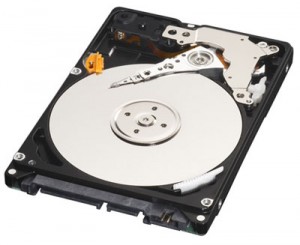 The maximum areal densities of hard disk drives are expected to more than double by 2016, according to an IHS iSuppli storage space market report published Monday.
The maximum areal densities of hard disk drives are expected to more than double by 2016, according to an IHS iSuppli storage space market report published Monday.
While the data may not be new – hard drive company Seagate has also predicted a doubling of drive density – IHS iSuppli has confirmed what the vendor community already knew.
IHS iSuppli said the increase in densities should bode well for the continued sales of hard drives in data-intensive applications such as video and audio systems, the market research firm stated.
Leading the way for greater disk density will be technologies such as heat-assisted magnetic recording (HAMR), which Seagate patented in 2006. Seagate has already said it will be able to produce a 60TB 3.5-in. hard drive by 2016. Laptop drives could reach 10TB to 20TB in the same time frame, IHS iSuppli stated.
According to IHS iSuppli, areal densities are projected to climb to a maximum 1,800 Gbits per square inch per platter by 2016, up from 744 Gbits per square inch in 2011. Areal density equals bit density, or bits of information per inch of a track multiplied by tracks per inch on a drive platter.
From 2011 to 2016, the five-year compound annual growth rate for HDD areal densities will be equivalent to 19%, IHS iSuppli wrote in its report.
This year, hard drive areal densities are estimated to reach 780Gbits per square inch per platter, and then rise to 900Gbits per square inch next year.
“The rise in areal density will pave the way for continued growth of the [hard disk drive] industry,” said Fang Zhang, an analyst for storage systems at IHS.
Zhang noted that despite technical limitations associated with today’s leading technology for writing to a drive – perpendicular magnetic recording (PMR) – other technologies such as HAMR will continue to drive up capacity.
Prior to HAMR, the most significant breakthrough in drive density was (PMR), which Seagate and Hitachi use in their drives today.
PMR technology is also expected to allow companies to reach the one terabyte per square inch milestone in the next few years, but that will also mark the technology’s upper limits, Seagate and others have said.
“In particular, growth opportunities will lie in applications associated with mass enterprise storage requirements, gaming, and in digital video recorders (DVRs) where massive capacity is required to store high-definition video,” Zhang said.
Seagate began shipping today’s highest areal density disk in September 2011. That drive, designed for desktop apps, boasted 4TB of capacity in a 3.5-in form factor. The drive had five platters with 625 Gbits per square inch, or the equivalent to more than 1TB of capacity per platter.





